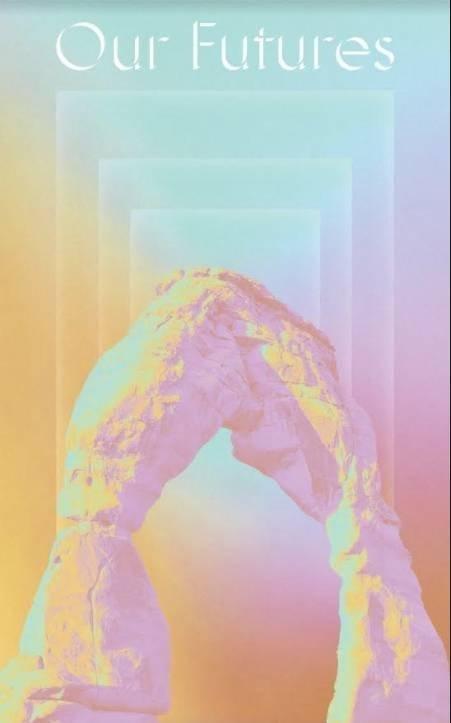Press Release
Green River, Utah – The Utah Museum of Fine Arts (UMFA) presents the second exhibition in its ACME Lab, a new space dedicated to community engagement and art experimentation in the Museum’s Emma Eccles Jones Education Center. “Our Futures,” designed by Green River’s own Epicenter, invites visitors to “time travel” to the year 2039 and experience four potential fictional futures for Green River. In doing so, visitors, specifically Utah’s teenagers and young adults, are asked to consider the role they each play in shaping their own community’s future.
Our Futures is follow-up to Epicenter’s “This Is Green River,” a collection of stories about the town of Green River exhibited back in 2015; personal stories, public stories and historical stories, each one connected to the objects and photos displayed. The objects were lent by the people of the town and helped Epicenter to create a physical history of Green River, tracing its history through the years. Collectively, this exhibit told the stories of these different times through the memories of the people that lived through them and objects that they had collected. Our Futures instead uses fictional objects and characters to explore four possible futures for Green River.
When a visitor steps into the ACME Lab to experience “Our Futures,” they’ll be tasked with voting for one of four fictional possibilities: for the town to disincorporate, become a tourist town, recruit an industry or host a space colonization facility. None of these futures are perfect, but all of these futures are based in Green River’s past or on another rural community’s reality respectively: real ghost towns like Cisco, UT, and disincorporated rural towns like Seneca, NE; resort towns like Moab and Park City; rural recycling-based towns in Africa; and the Green River Launch Facility (circa 1960-80’s), SpaceX Rocket Development and Test Facility, McGregor, TX, and Spaceport America in rural New Mexico.
After a visitor casts their vote, and wears a pin to show that they participated, they will step into the future to 2039. Each possible future brings both advantages and disadvantages to the community. Moreover, these fictional futures affect individual lives in ways that are sometimes positive, sometimes negative and often complicated. It’s through the diaries of two fictional teens, Mia and Cera, that these outcomes are more fully understood.
Best friends who’ve kept journals through their high school years, Mia and Cera become our tour guides through these speculative futures. Pages from their diaries illuminate how the Green River tourism industry with its Melon Queen Pageant and Hollywood talent scouts creates a dream-come-true scenario for one friend but not the other. The same holds true for a future in which a cutting-edge recycling industry appeals less to travelers and adventure-seekers, but signals new jobs to local residents as well as out-of-town families who hope to relocate there. Whether the future looks more like a ghost town, a spaceport, a resort town or an industrial town, it’s through the lens of Mia and Cera’s friendship that we glimpse the consequences of our individual votes.
While diary excerpts help tell the story of four futures, it’s the artifacts on display that bring this speculation to life. Visitors can try on clothing that Mia and Cera wore, take a selfie at a designated selfie spot, appreciate the beauty of Mia’s handmade jewelry, see what becomes of “old” recycled technology and learn what a “space valentine” is. There are even stations for smelling and hearing the future. At the end, each visitor will be asked to reflect on and respond to these worlds: What might the future look like in our my town? How can I help create the future I’d most like to see? Outside of the exhibit, interconnected K-12 programming will invite students to join each other in this conversation across the miles between our Salt Lake City-based UMFA and rural counterparts.
Epicenter’s “Our Futures” is curated by UMFA’s Ashley Farmer in collaboration with Jorge Rojas and Emily Izzo. ACME (Art. Community. Museum. Education.) is an outreach initiative by UMFA dedicated to rethinking the public role of museums. Learn more about ACME at www.umfa.utah.edu/acme.
Epicenter, located at 180 South Broadway in Green River, is a non-profit design studio facilitating year-round community-based projects in Green River, Utah. Learn more about Epicenter at www.ruralandproud.org.
Join Epicenter and the ACME team on March 1 at the Utah Museum of Art at 5 p.m. for a preview of the new exhibit “Our Futures.” An artist talk, Designing Our Futures, with co-creators Ryan Baxter, Bryan Brooks, Jarod Hamm and Maria Sykes will follow at 7 p.m.
“Our Future” will be exhibited from March 2 to July 1, 2018.


